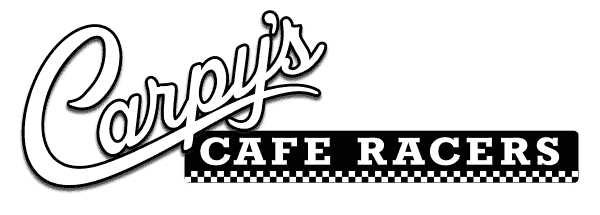SPEED WEEK 2015 HAS BEEN CANCELLED The SCTA President/Race Director Bill Lattin & the BNI Chairman Roy Creel spent this morning (July 20th) on the salt. The most they could find was 2 1/4 miles of salt suitable for a safe race course. The rest of the salt flats are either wet or wet and […]
-
-
- Home
- Meet Carpy
- Carpy’s Café Racers
- The Hot Tamale / HTML – Honda CB750
- The Rice Boiler – Honda CB750
- Tenacious Ton – Honda CB750
- Seoul Motion – Honda CB750
- Russ Collins Special – Honda CB1000
- The Lunsford – Honda CB750
- The Nut Basher – Honda CB750
- The Cosmic Cafe – Honda CB750
- The Cosmic Cafe – Honda CB750
- The Speedmaster – Honda CB750
- G.C.R. – Honda CB750
- The Revolver – Honda CB750
- The Cyclone – Honda CB750
- Shop Our Store
- Reader’s Rides
- Blog
-
-

